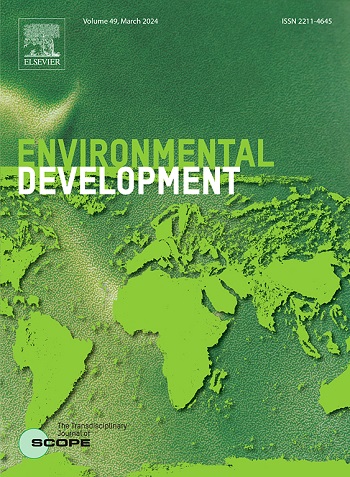Diminishing influence of climate change as the dominant factor on vegetation dynamics of the Qilian Mountains
IF 5.3
2区 环境科学与生态学
Q2 ENVIRONMENTAL SCIENCES
引用次数: 0
Abstract
Vegetation dynamics in the Qilian Mountains (QLMs) are influenced by complex topography, climate variability, and human activities, yet the underlying mechanisms remain insufficiently understood. This study assessed spatiotemporal vegetation trends using Theil-Sen trend analysis and the Hurst index across distinct subregions (eastern, central, western; mountain and valley areas). Partial Least Squares Structural Equation Modeling (PLS-SEM) was employed to analyze how climatic, anthropogenic, soil, and topographic factors shape spatial variation in the Normalized Difference Vegetation Index (NDVI). Residual analysis was used to quantify the relative contributions of climate change and human activities. The results showed that: (1) Since 2001, vegetation in the QLMs exhibited an overall improving trend (87.15 %), with localized degradation (2.66 %) mainly located in the eastern and central sections. (2) The spatial variation of NDVI in the QLMs is primarily driven by climatic factors, followed by human activities and topographic factors, with soil properties having the least impact. The pathways of these factors are similar across different regions, but their intensity varies significantly. As vegetation in most areas gradually adapts to climate change, the influence of climatic factors has weakened. (3) Climate change and human activities contributed 68.50 % and 31.50 % to interannual changes of vegetation, respectively. This study provided valuable insights for ecological protection and sustainable land management in the QLMs.

气候变化对祁连山植被动态的主导影响逐渐减弱
祁连山植被动态受复杂地形、气候变率和人类活动的影响,但其潜在机制尚不清楚。本研究利用Theil-Sen趋势分析和Hurst指数评估了不同次区域(东部、中部、西部和西部)的时空植被趋势。山区和河谷地区)。采用偏最小二乘结构方程模型(PLS-SEM)分析了气候、人为、土壤和地形因素对归一化植被指数(NDVI)空间变化的影响。残差分析用于量化气候变化和人类活动的相对贡献。结果表明:(1)2001年以来,青藏高原植被总体呈改善趋势(87.15%),局部退化(2.66%)主要集中在东部和中部;(2)高原NDVI的空间变化主要受气候因子驱动,其次是人类活动和地形因子,土壤性质对NDVI的影响最小。这些因素在不同地区的作用路径相似,但其强度差异显著。随着大部分地区植被逐渐适应气候变化,气候因子的影响减弱。(3)气候变化和人类活动对植被年际变化的贡献率分别为68.50%和31.50%。该研究为青藏高原的生态保护和土地可持续管理提供了有价值的见解。
本文章由计算机程序翻译,如有差异,请以英文原文为准。
求助全文
约1分钟内获得全文
求助全文
来源期刊

Environmental Development
Social Sciences-Geography, Planning and Development
CiteScore
8.40
自引率
1.90%
发文量
62
审稿时长
74 days
期刊介绍:
Environmental Development provides a future oriented, pro-active, authoritative source of information and learning for researchers, postgraduate students, policymakers, and managers, and bridges the gap between fundamental research and the application in management and policy practices. It stimulates the exchange and coupling of traditional scientific knowledge on the environment, with the experiential knowledge among decision makers and other stakeholders and also connects natural sciences and social and behavioral sciences. Environmental Development includes and promotes scientific work from the non-western world, and also strengthens the collaboration between the developed and developing world. Further it links environmental research to broader issues of economic and social-cultural developments, and is intended to shorten the delays between research and publication, while ensuring thorough peer review. Environmental Development also creates a forum for transnational communication, discussion and global action.
Environmental Development is open to a broad range of disciplines and authors. The journal welcomes, in particular, contributions from a younger generation of researchers, and papers expanding the frontiers of environmental sciences, pointing at new directions and innovative answers.
All submissions to Environmental Development are reviewed using the general criteria of quality, originality, precision, importance of topic and insights, clarity of exposition, which are in keeping with the journal''s aims and scope.
 求助内容:
求助内容: 应助结果提醒方式:
应助结果提醒方式:


